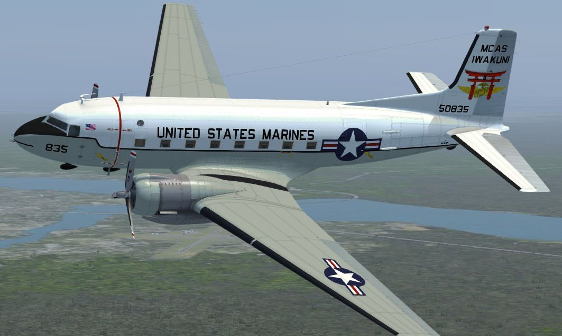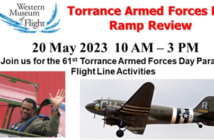The Stone Elephant in Marine Air Group, Danang, Vietnam was rocking that night with new “three-man lifts” starting every ninety minutes. Since I was off the flight schedule until the following afternoon, I was singularly focused on the poker game in progress where I found myself up a grand and finishing my second bottle of cabernet. Hell, why not? I was off duty, facing fourteen days until I rotated back to the states. Celebration was a natural order.
Suddenly the music was turned off. The crowd was hushed to order and a colonel from the 1st Wing Operations, stood on a chair, and announced: “Gentlemen, we have an emergency on our hands. A 200-man Marine Corps artillery base east of Hue is under serious attack by an overwhelming North Vietnamese Army battalion and is threatened to be overrun before sunup. The General has issued a ‘Mandatory flight order’ for a C-117 flare mission to be flown as soon as humanly possible. Those Marines need background lighting to effectively defend their hill position. We’ve directed one of our qualified Wing officers most familiar with the details to copilot the mission. He’s already on the flight line warming up the aircraft. We now need a qualified plane commander, so, all C-117 plane commanders present here tonight– front and center.”
All five qualified pilots in the bar at that moment, found themselves in some advanced stage of inebriation. Each of us staggered from the comfort of our respective seats and headed toward the guy standing on the chair. The colonel interrogated each of us in an effort to determine who he’d trust to fly the mandatory flight. Frustrated, he couldn’t choose the most sober of the lot, so he set up a determining challenge: “Okay, here’s how we’ll do it. Each of you five will walk on the crack in the cement deck. The pilot who walks the farthest without falling off the line will be assigned to the mission.”
And that’s how I began one of the most memorable flights in my career.
I gathered my flight gear and was escorted to a waiting jeep. Once seated I was immediately introduced to a forced coffee-drinking regimen by someone resembling a doctor. We arrived at the plane, where a five-gallon container of coffee and I were un-ceremonially deposited in the bird. I walked up to the cockpit on the right of the parachute flare preparation conveyer. The conveyer occupied the center of the cabin all the way from the cockpit to the gaping hole in the aircraft’s fuselage that previously housed a large cargo door. I remember thinking how absolutely ancient the Marine Corps flare operation really was. Aviation Marines lined the conveyer’s port side, preparing flares step-by-step until the three million candle-watt flares were fully prepped for release. The last step in that process involved a senior non-com Marine who was assigned to physically toss the parachute-adapted ordinance out of the enormous hole in the plane’s port side. “So many years of Marine tradition, totally uninterrupted by progress”, I reflected. I strapped myself into the plane commander’s seat and after briefly questioning the copilot on his knowledge of the aircraft and, being reasonably satisfied, I directed him to make the take-off and get us over the vulnerable artillery fire base as quickly as possible. The take-off from Danang demonstrated that the co-pilot was skilled in flying the plane. That allowed me to concentrate on drinking coffee.
Arriving over the threatened fire-support base, I was fascinated by the intense battle I saw below us. This wasn’t my first rodeo. I had witnessed a great number of serious engagements between the NVA and friendly troops. I flew three other aircraft types in which I maintained fight currency while in Vietnam: the RF-4 Phantom, the EF-10B Willie-the-Whale and the A4F Skyhawk; all fast-moving jet aircraft. But what I witnessed below me that night was something out of a Spielberg movie. The arty base was surrounded on three sides by the attacking NVA force. Tracers from the enemy’s automatic machine gun fire painted a bleak picture of a rapidly enveloping infantry force. Defensive fire from the fire support was limited, as attested by the minimal tracer rounds. I directed my copilot to begin an elliptical orbit at 5,000 feet above the ground. I told him not to get closer to the friendlies than 700 yards outside the support base’s perimeter. After he established his orbit, I directed the crew to begin their flare drop operations.
Under the brilliance of a three million candle-watt flares string, night turned into day. I could actually see individual enemy troops advancing toward the defensive wires surrounding the base. I was totally immersed in the scene below me. I didn’t have much else to do but watch an incredible combat ground engagement and, of course, drink lots of coffee.
After about thirty minutes of dropping flares and seeing the physical gap between the good guys and the bad guys get smaller, I decided there had to be a game changer. I called the senior Marine flare crew non-com to the cockpit and asked him, “What altitude have you set the flares to start and extinguish?” He informed me that they were igniting at 3,500 and burning out at about a thousand feet above the ground. I asked him what would he expect to happen if he set the flares to ignite at 2,000 feet.
“Major,” he said with eyes wide open and the broadest grin possible, “. . . you’d set the biggest grass fire you’ve ever seen.”
“Would it reach the fire support base?” I asked.
“I doubt it, ‘cause they’ve got that ground pretty much dug up for at least fifty yards, maybe seventy-five to a hundred yards.”
“That settles it,” I said. “Set the flares to land on the ground in their full illuminated glory.”
He raced aft to reconfigure the flares.
“Are you sure you want to do that?” my co-pilot asked.
“You’re damn right I want to do that, but I’m counting on you to maintain 700 yards away from the base. This could get dicey! Courts martial-worthy stuff.”
On the next inbound leg of the orbit, the newly-configured flares were dropped west of the fire support base. It didn’t take long before we were objectively informed as to the expected conclusion of our actions. Fires were exploding in the high grass concealing the NVA attackers. It soon became evident that the most forwardly-concealed attackers were being cut off from their reinforcements by the grass fire. Simultaneously they were being forced by the flames into the open towards the now hyper-active automatic weapons fire from the support base Marines. After about thirty minutes of watching the arty Marines kick booty and the NVA attackers doing everything possible to evade the largest grass fire I’d ever seen, I decided I had a more important personal mission I had to attend to. As I unstrapped my seatbelt and vacated my seat, I turned to my co-pilot and shouted, “Those arty Marines have no idea who just saved their sorry asses. Now I’m headed aft to hit the head.”
I walked aft past the smiling flare crew; their faces were grim when I first had got aboard. Now they were beaming as the realization of the impact of their actions settled in. As I passed the end of the flare conveyer headed aft toward the head, the aircraft sharply banked to the port. I quickly reached out with my left hand and grabbed the seat-back webbing attached to the fuselage. As the aircraft continued in its sharp port turn, I felt the webbing tearing off the bulkhead. I spun around to grab more webbing with my right hand, finding myself sliding uncontrollably towards the wide-open cargo door. With my right hand in a death grip on the webbing, I continued my slide. Cascading without the benefit of a parachute, I slid completely out of the plane and into the 140-knot airstream. I hung in the air stream 5,000 feet above the earth, tethered to the plane by only a right-handed fist full of webbing. From this unique vantage point I watched the final phase of dueling automatic weapons fire. Even though I was fully illuminated by the flares, I remember looking down on the scene below me thinking, “I bet they don’t even see me.”
Time seemed to stop. A prayer formed in my heart, “Oh no Lord, not this way.”
As soon as that thought emerged, what felt like a superhuman hand grasped the back of my flight suit and began to drag me back into the plane. The Good Lord had sent my guardian angel, a brave Marine Corps Gunnery Sergeant crew chief. His beefy paw had a firm grasp of my flight suit and his Marine Corps mind-set was hell-bent on wrestling me back into the plane. Once back in the plane and safely away from the open cargo door, I realized that I no longer needed to hit the head. I was also convinced that, even though I had expelled gallons of coffee, it probably didn’t dampen the raging fire much. After I returned to the cockpit, I found it hard not to strangle the co-pilot. Particularly after he told me that the reason for the 60-degree angle-of-bank turn was to adhere to some air controller’s request for an “expedited turn.”
And no, I couldn’t get the co-pilot to proceed aft to the head in spite of my direct orders to do so; he retained his death grip on the flight controls. I can’t remember his name, so he’s safe for life. I also can’t remember the name of the Angel of Mercy Marine who pulled me back into the aircraft. That memory failure still hurts.




